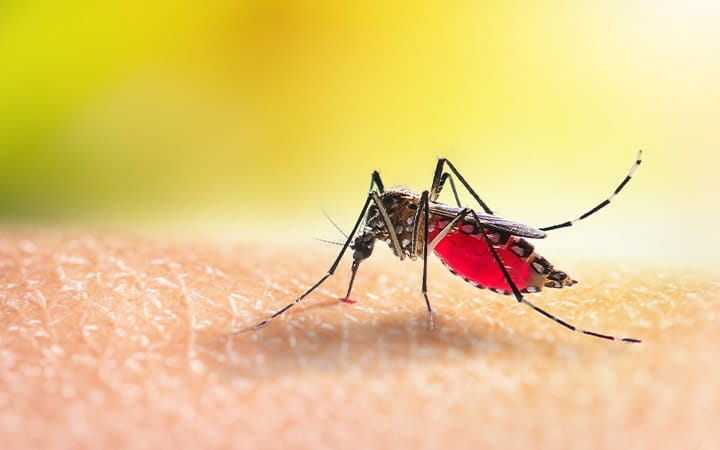What to Know About Malaria After Cases Found in U.S.
July 13, 2023

It’s unusual to catch malaria in the United States, but a few recent cases in Texas and Florida remind us that the mosquito-borne disease can happen here.
Malaria mostly occurs in tropical and subtropical areas of the world. The Centers for Disease Control and Prevention (CDC) issued a health alert after four cases were detected in Florida and one in Texas within the last two months.
The infections were acquired in the United States, not brought here from overseas. They’re the first cases acquired in the U.S. since 2003.
What is Malaria?
Malaria is a life-threatening disease caused by parasites transmitted through the bite of infected female Anopheles mosquitoes.
Malaria is not contagious between people, but mosquitos that bite infected people will pass it on to other people. Malaria also can be passed on from a mother to an unborn child.
Malaria causes hundreds of thousands of deaths every year, mostly in sub-Saharan Africa. Young children and pregnant women are most vulnerable.
The strain found in Texas and Florida (plasmodium vivax) tends to cause milder symptoms than the more dangerous strain (plasmodium falciparum) that circulates in warmer parts of the world, says University Hospitals infectious disease specialist Keith Armitage, MD, with the University Hospitals Roe Green Center for Travel Medicine and Global Health.
“Two hundred years ago, diseases like malaria and yellow fever were common in the United States,” Dr. Armitage says.
“We’ve been extremely successful eliminating such diseases in the United States. We have an infrastructure of federal, state and local health authorities with expertise in surveillance. We have programs to check mosquitoes, to do baseline surveillance to know what’s going on. That’s why it’s important to fund public health.”
Is the Health Alert Cause for Concern?
Health-care providers are being asked to be on alert for patients with unexplained fevers, particularly if the patient had been in an affected area.
Fever is the most common symptom of malaria. The disease is diagnosed by examining a drop of blood under microscope.
“Malaria is an easy diagnosis, but you have to look for it,” Dr. Armitage says. “Sometimes it gets missed because clinicians don’t know about recent travel or don’t make the connection between travel and risk for malaria.”
The new cases in Florida and Texas are isolated. Northern states aren’t likely to see home-grown cases. “People who live in a state other than Florida and Texas probably have zero risk of malaria exposure, and the risk in Texas and Florida is extremely low,” Dr. Armitage says.
The vast majority of malaria cases seen in the United States are imported from overseas. “People get malaria when they go to India, Africa, South America, Oceania, East Asia and South Asia. As an infectious disease and travel medicine doctor, we see cases. Part of what we do in the travel clinic is preventing malaria in travelers.”
But with global warming, the range of disease-carrying insects such as mosquitoes and ticks is growing, Dr. Armitage says. Ohio, for example, has seen rapid growth in Lyme disease, spread by the deer tick.
“That’s important for clinicians around the country to keep in mind,” Dr. Armitage says. “The Anopheles mosquito is mostly found in southern states. With the warming climate and rain, the range of the Anopheles mosquito may be changing.”
What Are the Symptoms?
Aside from fever, other symptoms are variable but may include headache, fatigue, chills, muscle pain, nausea, vomiting and diarrhea.
Symptoms usually appear 10 days to four weeks after infection. Untreated, malaria can lead to severe disease including seizures, kidney failure and coma.
Dr. Armitage says people who live in areas where malaria is endemic have partial immunity from exposure.
“They tend not to get very sick. They get a fever and get run down. In people lacking immunity, malaria can attack their body in such a way that they get sick and die, especially with the falciparum strain of malaria. The vivax strain is less likely to cause serious illness, but it can.”
How is Malaria Treated?
Several prescription medications are used to treat malaria.
The type of treatment depends on the type of malaria, where the person was infected, their age, whether they are pregnant and how sick they are at the start of treatment.
Treatment should begin soon as possible to prevent more severe illness.
Recommendations From the CDC
Take steps to prevent mosquito bites and control mosquitos at home to prevent any mosquito-borne illness.
- Use an EPA-registered insect repellant with one of the active ingredients below, which are proven safe and effective, even for pregnant and breastfeeding women.
- DEET
- Picaridin (known as KBR 3023 and icaridin outside the US)
- IR3535
- Oil of lemon eucalyptus (OLE)
- Para-menthane-diol (PMD)
- 2-undecanone
- Control mosquitos at home with outdoor and indoor best practices.
- Before you travel, learn about the health risks and precautions for malaria and other diseases for your destination.
- If you’re traveling internationally to an area where malaria occurs, talk to your health-care provider about medications to prevent the disease.
- If you have traveled to an area where malaria occurs and develop symptoms, seek medical care and tell your health-care provider that you have traveled.
Related Links
The board-certified infectious disease specialists at the University Hospitals Roe Green Center for Travel Medicine & Global Health can help ensure that travelers of all ages stay healthy and safe during their journeys.


